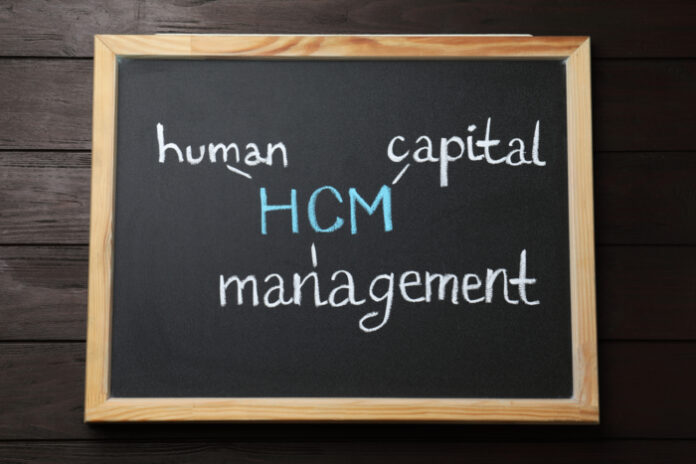Performance management is a critical aspect of human resources that directly impacts an organization’s success. It involves various processes aimed at ensuring that employees are performing at their best, aligning their goals with the company’s objectives, and continuously improving their skills and contributions.
In the digital age, Human Capital Management (HCM) systems have become indispensable tools for optimizing and streamlining performance management. This article explores the role of HCM systems in effective performance management, the key features to look for in an HCM system, and the benefits they offer to both employees and organizations.
Understanding Performance Management
Performance management encompasses a range of activities and processes designed to monitor, evaluate, and enhance employee performance. Traditionally, this involved manual systems, such as paper-based performance appraisals and spreadsheets, which were not only time-consuming but also prone to errors. In today’s fast-paced and data-driven world, organizations need more efficient and accurate ways to manage employee performance.
The Components of Performance Management
- Goal Setting: Performance management starts with setting clear and measurable goals for employees. These goals should align with the company’s objectives and provide a roadmap for employee performance.
- Continuous Feedback: Regular feedback, both from managers and peers, is essential for helping employees understand their strengths and areas for improvement.
- Performance Appraisals: Periodic assessments of employee performance are conducted to evaluate their achievements, provide constructive feedback, and set future performance goals.
- Development Plans: Identifying areas where employees need improvement and creating development plans to enhance their skills and capabilities.
- Recognition and Rewards: Acknowledging and rewarding employees for their outstanding contributions can boost motivation and morale.
Challenges with Traditional Performance Management
Traditional performance management systems often suffer from several drawbacks, including:
- Inefficiency: Manual processes are time-consuming, requiring HR personnel to spend significant amounts of time on administrative tasks.
- Bias and Subjectivity: Human judgments can be biased, leading to inaccurate assessments of employee performance.
- Lack of Timeliness: Annual or semi-annual reviews may not address performance issues in a timely manner.
- Poor Visibility: Difficulty in tracking employee progress and assessing the impact of performance management efforts.
Role of HCM Systems in Performance Management
Human Capital Management (HCM) systems have emerged as a solution to many of the challenges posed by traditional performance management. These integrated software solutions provide a centralized platform for managing various HR functions, including performance management.
Key Features of HCM Systems for Performance Management
- Goal Management: HCM systems allow organizations to set and track individual and team goals, ensuring alignment with the company’s objectives.
- Continuous Feedback and Communication: HCM systems facilitate ongoing feedback and communication, fostering a culture of collaboration and transparency.
- Performance Appraisals: Automating performance reviews, enabling timely and consistent assessments, and reducing the potential for bias.
- Skill and Competency Management: Tracking employee skills and competencies, allowing for targeted training and development.
- Recognition and Rewards: Implementing recognition programs and managing rewards within the HCM system.
- Analytics and Reporting: Generating reports and analytics on employee performance, helping organizations make data-driven decisions.
Benefits of HCM Systems in Performance Management
- Efficiency: HCM systems streamline the entire performance management process, saving time and resources.
- Objectivity: By reducing human bias, HCM systems provide a more objective assessment of employee performance.
- Timeliness: Real-time feedback and regular check-ins ensure that performance issues are addressed promptly.
- Transparency: Employees can track their progress and contributions, enhancing transparency and engagement.
- Development: Identifying skills gaps and offering targeted development plans to improve employee performance.
- Employee Engagement: Engaged employees tend to perform better, and HCM systems promote engagement through feedback, recognition, and goal alignment.
The Impact of HCM Systems on Employee Performance
The adoption of HCM systems for performance management has a significant impact on employee performance and overall organizational success.
Improved Productivity
With real-time feedback and continuous performance monitoring, employees are more likely to stay on track and meet their goals. The timely recognition of achievements also boosts motivation, leading to increased productivity.
Enhanced Employee Development
HCM systems play a crucial role in identifying skill gaps within the workforce and subsequently crafting personalized development plans. This provision of relevant training and resources greatly enhances employee performance, as individuals are more inclined to enhance their skills when they have access to tailored growth opportunities and guidance.
Employee Engagement
Engagement is vital as it encourages employee commitment to their roles and the organization. HCM systems play a pivotal role in fostering engagement through transparent communication, recognition programs, and aligning individual goals with the company’s objectives, thus ensuring a motivated and dedicated workforce that contributes to an organization’s success.
Reduced Turnover
HCM systems contribute to reduced turnover by fostering an environment where employees feel valued, acknowledged, and offered opportunities for growth. This positive work culture aligns with employee retention, as satisfied individuals are less inclined to seek opportunities elsewhere, ultimately benefiting the organization in terms of stability and talent retention.
The Impact of HCM Systems on Organizational Success
The benefits of HCM systems extend beyond individual employee performance to the overall success of the organization.
Strategic Alignment
Human Capital Management (HCM) systems foster alignment of individual and team goals with the organization’s strategic objectives. This synchronization enhances workforce efficiency and focus, enabling the company to work cohesively towards its overarching mission and goals.
Data-Driven Decision Making
HCM systems empower organizations with robust data and analytics capabilities, facilitating data-driven decision-making for workforce planning, resource allocation, and talent development. This valuable insight ensures that resources are strategically utilized, leading to more effective and efficient HR strategies that align with organizational objectives.
Cost Savings
Streamlined performance management through HCM systems not only improves efficiency but also curtails turnover, resulting in significant cost savings. These savings can be reallocated to more strategic initiatives, bolstering the organization’s capacity to invest in areas that drive long-term growth and success.
Competitive Advantage
Employing HCM systems for effective workforce management positions organizations for a competitive edge. A highly engaged and high-performing workforce fosters an environment conducive to innovation and excellence, enabling the company to outpace competitors and excel in its industry.
Best Practices for Implementing HCM Systems
To maximize the benefits of HCM systems for performance management, organizations should follow some best practices:
Clearly Define Goals and Objectives
Before implementing an HCM system, it’s essential to have a clear understanding of your organization’s goals and objectives for performance management. This will help in selecting the right features and customization options within the system.
Involve Stakeholders
Incorporating input and feedback from all pertinent stakeholders, including HR personnel, managers, and employees, is essential to ensure that the HCM system aligns with their requirements and anticipations. This collaborative approach enhances system adoption, functionality, and overall effectiveness in achieving performance management goals.
Training and Onboarding
Comprehensive training and onboarding for both employees and managers regarding the HCM system are crucial. It equips users with the necessary skills and knowledge to harness the system’s full potential, enhancing their ability to effectively utilize it for performance management and HR functions.
Regular Updates and Maintenance
Maintaining HCM systems involves continuous updates to stay aligned with evolving best practices and industry trends. Regular reviews and updates ensure that the system remains efficient, secure, and capable of addressing new HR challenges, allowing organizations to adapt to changing workforce dynamics and technology advancements.
Monitor and Adjust
A vigilant approach to monitoring the HCM system’s impact on performance management is essential. By analyzing feedback and results, organizations can identify areas of improvement and adapt the system to better meet their goals. This ongoing evaluation ensures the system’s relevance and effectiveness in enhancing performance management processes.
Conclusion
In today’s fast-paced business environment, effective performance management is essential for organizational success. Human Capital Management (HCM) systems have revolutionized the way performance management is conducted, offering a more efficient, objective, and data-driven approach. These systems not only improve employee performance but also contribute to the overall success of the organization by aligning individual goals with strategic objectives, reducing costs, and gaining a competitive advantage.
When implemented with best practices and a focus on stakeholder involvement, HCM systems can be a game-changer for organizations looking to optimize their performance management processes.
By embracing HCM systems, organizations can take a significant step toward nurturing a high-performing and engaged workforce, ensuring their continued growth and success in a competitive market.
Find a Home-Based Business to Start-Up >>> Hundreds of Business Listings.















































